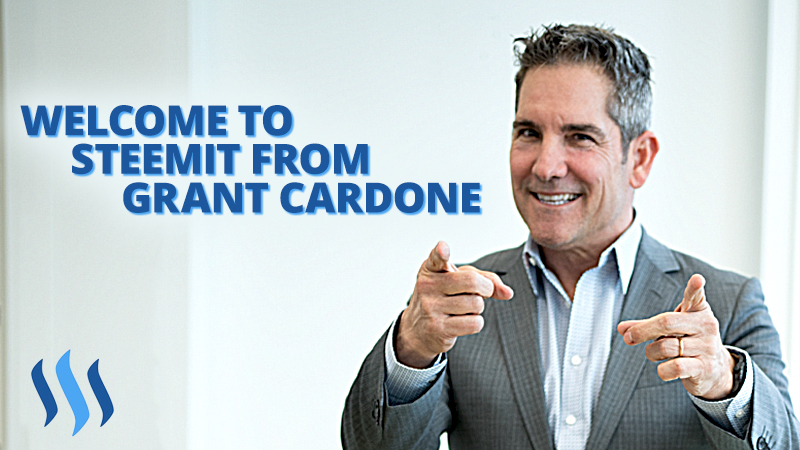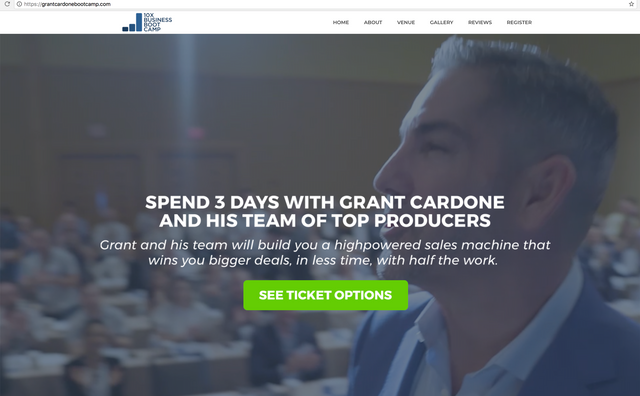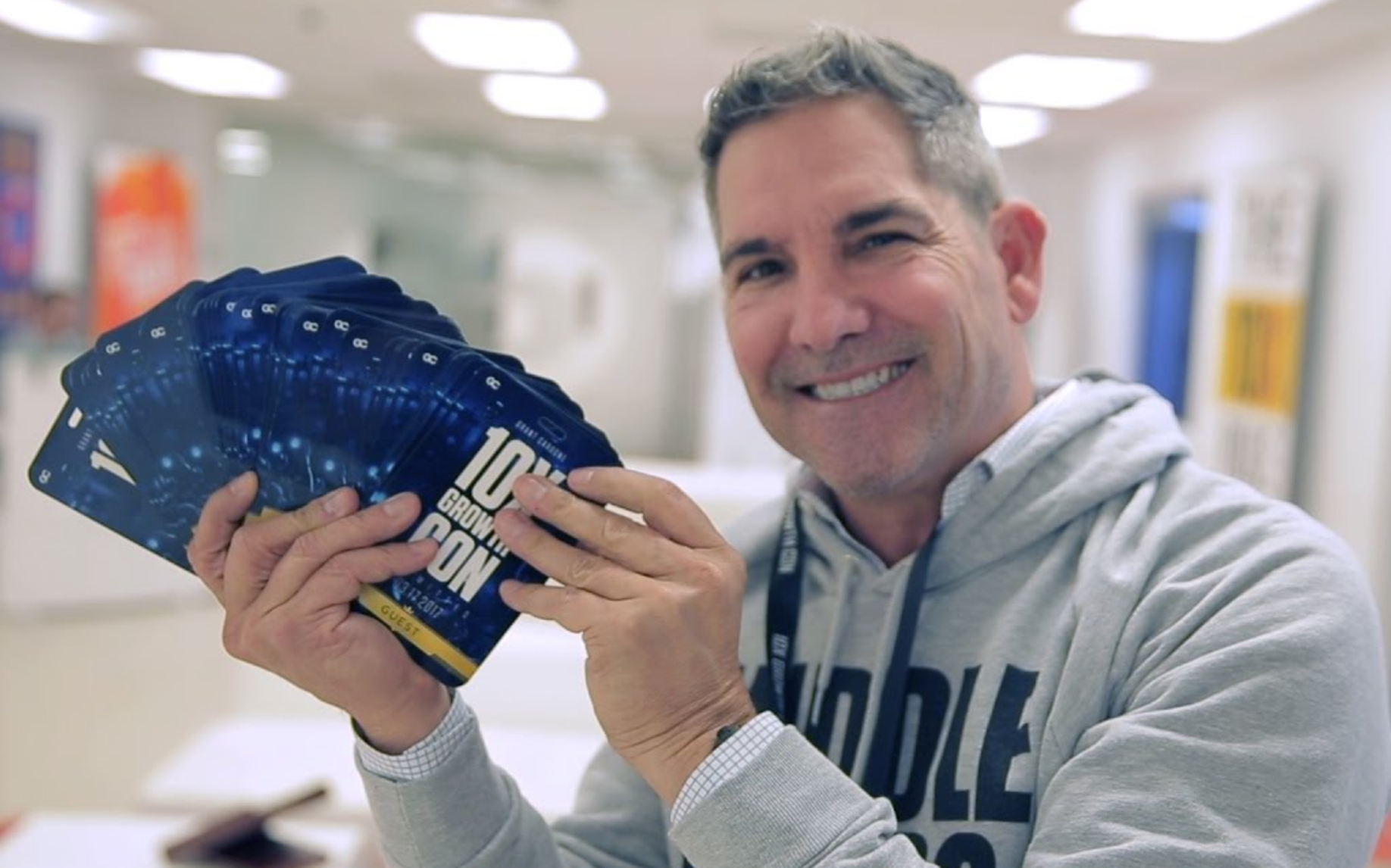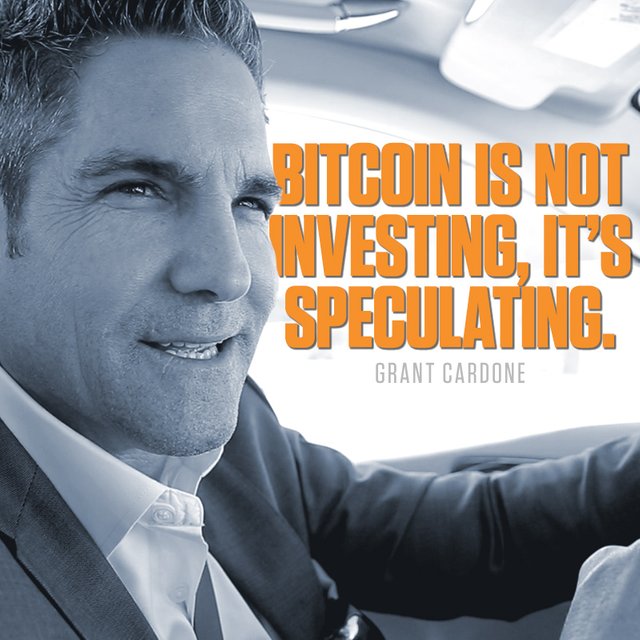
I used to go around the country doing small, baby events—I’m talking about 100, 200 people in a room for a 4 or 8 hour seminar. If I did a gig with 300 or 400 people, that was huge. Since those times, I’ve grown and I’ve learned how to sell out an arena with nearly 10,000 people, and I want to teach you how I do it!
There are 5 steps to follow:
#1 Have an Idea/ Goal:
This is the first step to doing anything. Everything starts in your mind. Back in December 2016, I had a simple idea, but I knew making it into reality would be a big task. I wanted to put on a “10X” conference (branded after my bestselling book The 10X Rule) for entrepreneurs, business owners, and anyone looking to increase their income in life. It would be a 4-day event with over 20 speakers, and I wanted thousands of people to be there to make it a great networking opportunity as well.
This is perhaps the most simple step, but it’s also the most difficult. If you don’t have a good idea that people want, you’re not going to sell anything anyway. So first start with a good idea, and make a goal of how many units or tickets you want to sell.
You also need to pick a price. What will you sell each seat for? Will it be a bargain $99 event or a premium $5,000 ticket? Keep in mind you should have different levels of tickets for sale to have selections for people to choose from. Just as no good restaurant has only one thing on the menu, your event should have at least 3 options for people to choose from.
I’ve done General Seating, Executive Seating, Executive Floor Seating, VIP seating, and Premium Seating. You can call it what you wish and price it what you wish—just make sure that you deliver more value than what they pay and everyone is happy!
Be careful not to price your tickets too low—events have many unexpected expenses you don’t think about beforehand!
Ok, you have the idea, a goal, and got prices figured out. Now what?
#2 Create a Website:

At this stage I tell my team to put it up online right away—there is no delay. Too many people wait for weeks and months planning and organizing before getting their product to the public. You shouldn’t wait—act right away and get the ball rolling.
It doesn’t need to be perfect right away, so don’t worry if you don’t like it. You can improve this page as time goes on with better images, better copy, and placement of buttons and so forth.
Remember, at this stage you may not even have a venue ready yet!
It doesn’t matter, put a BUY button in there and set up the backend so you can begin taking orders. I began selling tickets to the 10X Growth Conference long before I nailed down a venue. I didn’t even have a date set! You see, at this stage you’re just running on an idea and a goal—you haven’t figured out all the details.
Keep in mind also that in this early stage, if you want to sell anything you need to give people something NOW or have SCARCITY (ideally you have both). This is because…
A) They don’t know the date—this stops people from committing.
B) They don’t know the place—this brings more uncertainty.
But I am living proof you don’t need a date and venue before you start selling tickets to an event. What you do need is something they can get INSTANTLY for purchasing, or have some limit to the time or number of tickets you’ll sell at this early bird price.
Ok, you have a web page up and can sell tickets now. Now what?
#3 Make Physical Things to Show/ Hold
The problem with selling an event is that oftentimes people want to see what they get—and it’s hard to show something physical, especially if you haven’t done an event before.
For this reason, it’s good to get some sort of tickets made, even if you’re not going to use physical tickets—it shows people something.

When I pitch, I like to show people because seeing is believing. I sell many digital products on the internet that have great value but they are only consumed on your computer/phone—they’re virtual. Because of this I have my graphics guys make “physical mock-ups” of what they would be getting if the product were physical—like a box of DVD’s or something:

This works because people like to see what they’re getting. Even though these products above have no physical reality, the digital content contained in each product would make a box set like pictured above if we were ever to sell a physical version of them. So don’t be afraid to play the “what if?” game. Imagine your product as a physical thing and create it!
This isn’t deceiving because people KNOW they are buying an event or getting something digital, but it helps them make sense in their head of what they’re actually getting with your offer.
Remember, this goes back to GIVING someone something instantly for buying now. Maybe you have something like an e-book or an audio program that they can get when they purchase a ticket. It gives them something to enjoy NOW since the event is sometime in the future.
Your buyer could buy later—but you’re getting them to buy now because of what you’re giving them NOW. Maybe it’s not anything digital, maybe you have something actually physical that you ship to them when they purchase. Great! People like to see and touch, so figure out what you can give them to make the decision now and not delay it until later.
#4 Flip the Story
The problem with selling is that different stories work for different people. Let me explain.
One guy goes to Las Vegas because he wants to gamble and win big money. His story is about how much he can win.
Another guy wants to go to Las Vegas because he wants to get away from work, he’s exhausted with his 9 to 5 and just wants some fun. His story is how much he’s going to enjoy himself.
The next guy wants to go to Las Vegas to be a bad boy…Another guy goes to impress his girlfriend…
You get the point—people have different motivations inwardly for doing things. If my marketing pitch is all about come to Las Vegas to win big money, that may convince the first guy but won’t do anything for the guy who just wants a weekend getaway with no expectations of financial gain.
This is why you need different stories to sell an event.
You also need to flip the story when it comes to your offers. It’s very difficult to sell out a big event with just a single offer.
What I do is create multiple landing pages, one for each story I want to pitch. Every event should have multiple landing pages you can send people depending upon on the story you’re telling. Your initial web page is your home base, it’s the generic page and gives all the information about the event, but as you create more offers you need more landing pages that are specific to those offers.
The last thing you need is an overcrowded website with too many offers going on.
Here are some examples of story flips:
• Buy a ticket get in my mentoring program FREE
• Buy a ticket get a FREE personal coaching session
• Buy a ticket get 12 months access to my online Cardone University for FREE now
• Buy a ticket, get 100% credit back on any digital products in my store
• Buy a ticket get your airfare/hotel included
• Buy one ticket, get a second ticket FREE
Do you see the different stories playing out here? I’ve got people who want to spend time with me, I’ve got other people who just don’t want to deal with booking a hotel, and still others just looking for a deal.
Your story flips will probably be different. Maybe you do Bitcoin giveaway, the possibilities are endless! The point is, FLIP YOUR STORIES!
#5 Lead Generate
Once you have all your landing pages up to easily send people to different places, now it’s just a numbers game. You need traffic. Even for a guy like me with millions of followers on social media, I don’t depend solely on organic traffic. This is where paid ads on Facebook, Google, Instagram, and YouTube come in.
If you’re not an expert on this, my team can help. I created 10X Productions as a full service digital advertising agency that takes care of all your needs. Check us out at https://media.grantcardonetv.com/
Summary
Have an idea/goal, create a website, make physical things to show/hold, flip the story, and lead generate.
You’re ready to sell out an event!
—Grant

Thanks for posting this @grantcardone! Just recently finished your BiggerPockets podcast which I found fascinating. Would love to get your view on how you view crypto investing vs. RE investing? The latter obviously spits out a continuous, self-sustaining stream of income but one could argue the ST ROI for crypto could be higher. Thoughts?
Downvoting a post can decrease pending rewards and make it less visible. Common reasons:
Submit
Crypto can have a bigger ROI but it's also the chance of losing. Do you want to get rich quick or get rich for sure? That's the difference to me.

Downvoting a post can decrease pending rewards and make it less visible. Common reasons:
Submit
You definitely have the repertoire for success. I like listening to motivational speakers like you that are actually successful. I like your part about catering to different peoples desires to come to Vegas and therefore creating many different landing pages in addition to the generic page. I need to do that with my Steemit posts, and to cater to different people that I work with! Your Steemit page is on the cusp of taking off!
Downvoting a post can decrease pending rewards and make it less visible. Common reasons:
Submit
Thanks for the heads up.
I maybe not getting it but you should have more steemians going crazy for your posts.
This is big money posts.
Hey I can only speak for myself.
Thanks for sharing great skills about events.
Downvoting a post can decrease pending rewards and make it less visible. Common reasons:
Submit
Great advice brotha.. I have had a few music festival events, but I have thought about doing other types of events as well!
Downvoting a post can decrease pending rewards and make it less visible. Common reasons:
Submit
Thanks, great post ! I use some of these methods myself and the physical product to hold and share is always a winner !
Downvoting a post can decrease pending rewards and make it less visible. Common reasons:
Submit
Great Post Uncle G. I've used similar media throwing events via Facebook Events and Eventbrite. Good job on the break down. It's always good to make to the customer or client feel like their walking away with the better deal. From what I've learned from you and other that's the best way to go.
Downvoting a post can decrease pending rewards and make it less visible. Common reasons:
Submit